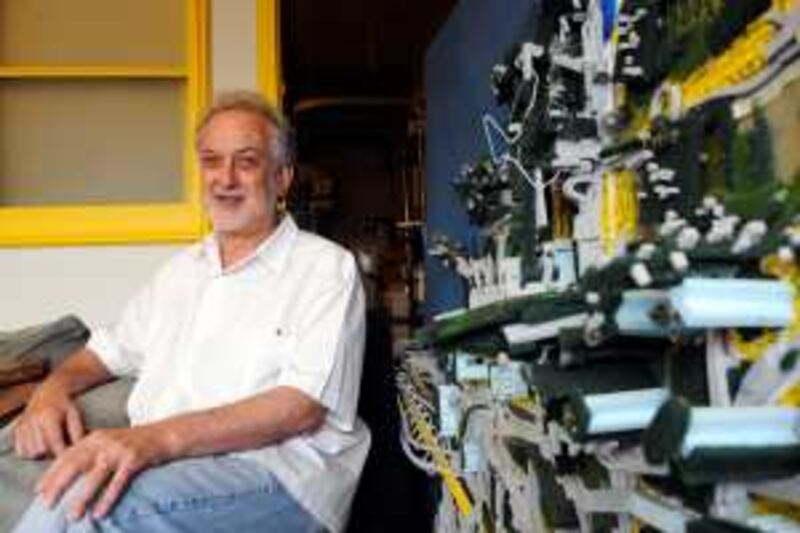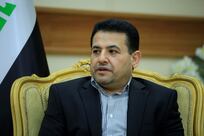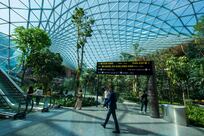NEW YORK // Michael Sorkin, an acclaimed US architect and critic, is allowing himself to hope just a little bit that President Barack Obama will succeed in prodding the Israelis and Palestinians towards peace.
Over the past decade, Mr Sorkin, 60, has often directed scathing criticism at Israel's occupation of the Palestinian territories. His numerous books include The Next Jerusalem - Sharing the Divided City, a collection of essays that followed collaborative efforts with Israeli and Palestinian architects, and Against the Wall, which took aim at the "aggressivity and racism" of the West Bank separation barrier.
Recent signals by the US administration of its commitment towards reaching a Middle East accord have given a new impetus to another long-running project of Mr Sorkin, a professor at the City College of New York: a challenge to his students to create designs for an economically and environmentally sustainable Gaza Strip.
Although his many projects have taken him around the world, his Middle East writings have generated the most controversy and attacks, particularly from the pro-Israeli hawks.
"I've been put in the Top 10 of self-loathing Jews," he said laughingly at his studio in Manhattan's West Village last week. He then took aim at the Likud Party, led by Benjamin Netanyahu, the Israeli prime minister.
"I'm not a religious person, but it's true that the backbone of American liberal opinion and the US Left has been Jewish. The legacy of Judaism is its tradition of intellect and justice and to me the anti-Semites are the Likudniks and Netanyahu, who betray this legacy."
Mr Sorkin had just returned from a trip to give a lecture in Ajman. He found in the UAE "some tolerable urban places" along with energy and dynamism but also much that would fall within his earlier critiques of "new urbanism" elsewhere in the world.
New urbanism started as an architectural movement in the United States in the 1980s and promotes mixed-use, pedestrian-friendly neighbourhoods. Mr Sorkin is a long-time advocate of public transportation but he has railed against the movement's neo-traditionalism and trend towards uniformity of design.
But he said he was bowled over by Masdar City, the planned carbon-neutral development in Abu Dhabi that will rely entirely on renewable energy. "There is nothing as progressive or as remotely interesting here in the US," he said. "We are so far behind and I'm full of admiration for Masdar."
His plans for Gaza are typical of the "counter-planning" he likes to create, without waiting for a tender by developers or planners, to spark debate.
He estimated that because of the Gaza Strip's population density, its "ecological footprint" - meaning the space it needs to produce the water, oxygen and food, et cetera, to sustain itself - was somewhere between the area of Ireland and Portugal. Los Angeles, for example, would need an area the size of Peru to be self-sufficient.
Under his plans, Gaza would develop a postindustrial, knowledge-based economy combined with small-scale manufacturing comparable to that found in other leading cities. There would also be free access between the Strip, on the Mediterranean Sea and the West Bank of the Jordan River. He has labelled previous proposals for some form of land bridge between the two areas the results of "psychotic politics".
"We've done the preliminary work on Gaza and it is possible to make it sustainable if the politics get into a rational alignment," he said.
He recounted his annoyance at a question asked during a recent talk by Amira Hass, an Israeli journalist who writes for Haaretz, the liberal daily newspaper, who lives in Ramallah and reports first-hand the travails of Palestinian life.
"Someone asked her why the Palestinians hadn't produced a [Mohandas] Gandhi or [Nelson] Mandela," he said, referring to the Indian and South African leaders. "These people are miracles and it shouldn't take miracles to solve this thing. Everyone knows the outlines of a deal based on the 1967 borders and a shared Jerusalem. I only hope Obama proves to be a powerful interventionist."
Mr Sorkin has used numerous platforms to air his views. The Harvard and MIT graduate not only teaches but has his own Michael Sorkin Studio, is president of Terreform, a non-profit organisation that works in urban research, and has written hundreds of articles as an architecture critic.
Last month he was elected a fellow of the American Academy of Arts and Sciences, along with Robert Gates, the US defence secretary, Bono, the pop singer and social activist, and South Africa's Mr Mandela.
However, his position at the heart of the US academic establishment has never deterred him from battles with his peers. He became embroiled in a public spat a few years ago with Frank Gehry, the architect and designer of the Museum of Tolerance, which many consider to be ironically named given that it is to be built on the ruins of a Muslim cemetery in Jerusalem.
Mr Sorkin said Mr Gehry's design, which includes the use of irregular stone blocks, evoked "the 'deconstruction' of Yasser Arafat's headquarters in Ramallah into a pile of rubble by Israeli security forces".
The late Palestinian president spent the final years of his life under siege in the West Bank town before his death in 2004.
Mr Gehry has also been hired to design the Guggenheim Museum in Abu Dhabi. sdevi@thenational.ae






